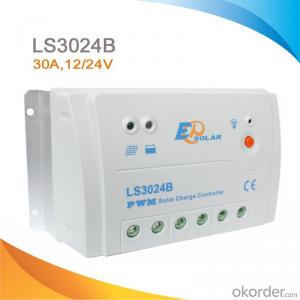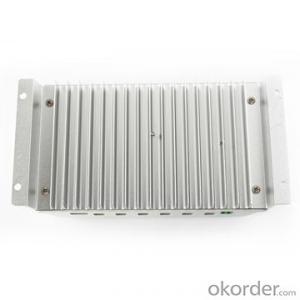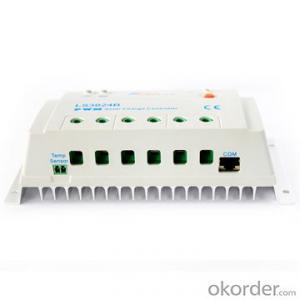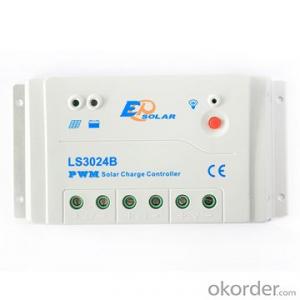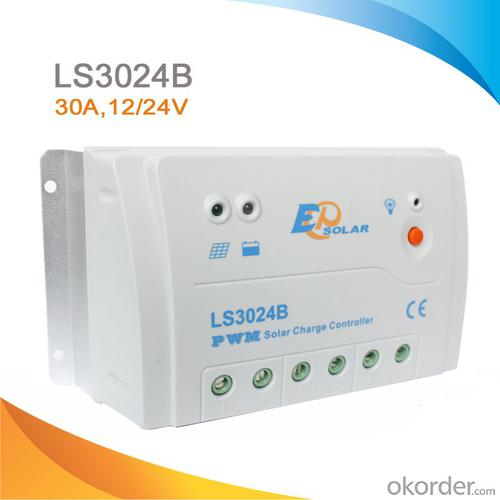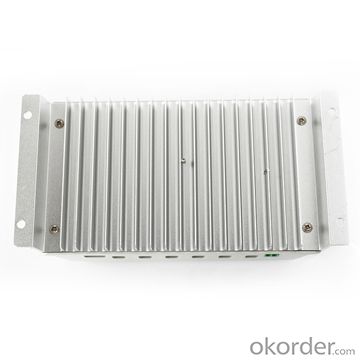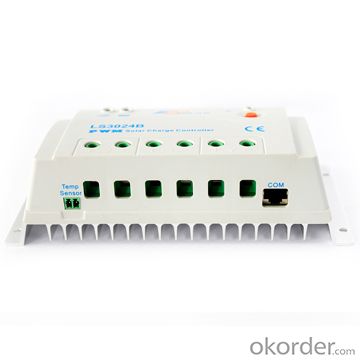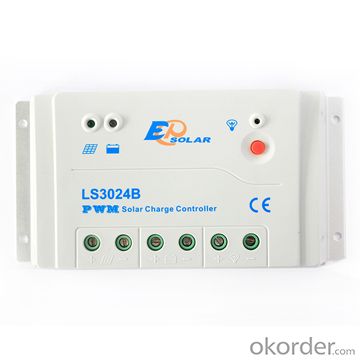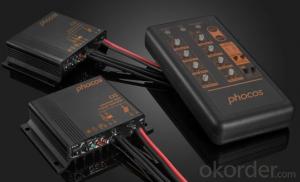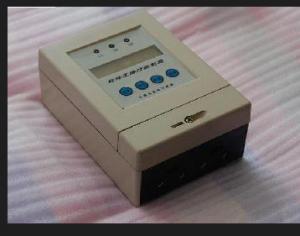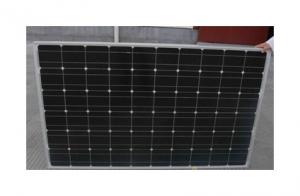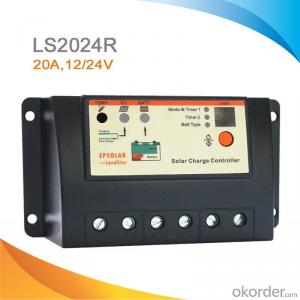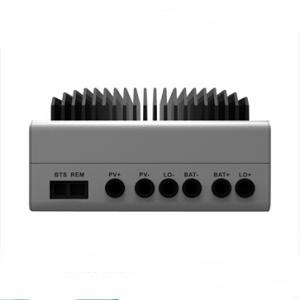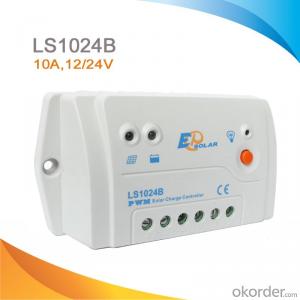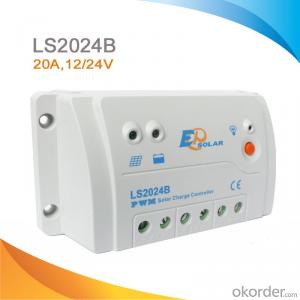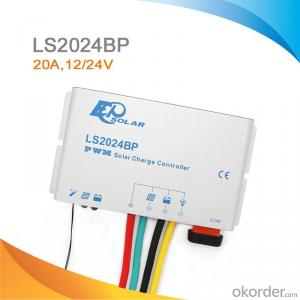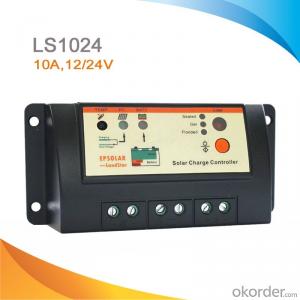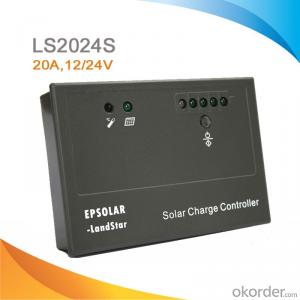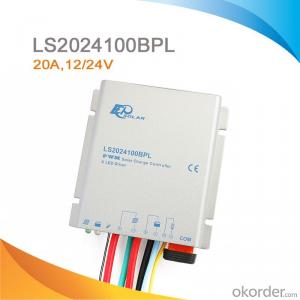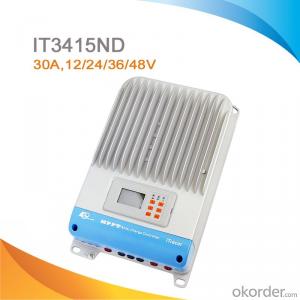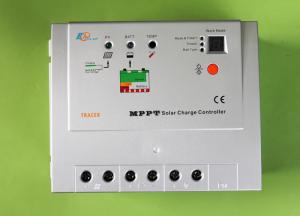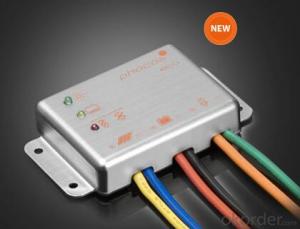Aerl Solar Controllers PWM Solar Charge Controller 30A 12/24V LS3024B
- Loading Port:
- Tianjin
- Payment Terms:
- TT or LC
- Min Order Qty:
- -
- Supply Capability:
- 10000 pc/month
OKorder Service Pledge
OKorder Financial Service
You Might Also Like
Features:
·Three system voltage configuration : 12V, 24V or 12V/24V auto work
·High efficiency PWM charging with temperature compensation
·3 LEDs shows PV charging, battery and load status
·External temperature sensor interface
·RS-485 bus communication
·Open standard Modbus communication protocol
·Software update function
More powerful function via MT50 or PC
·Diversified load control modes : Manual, Light ON/OFF, Light ON+ Timer, Time Control
·Battery type selection: Gel, sealed, flooded and User type
·Real-time monitor
·Programmable parameters
·LVD or SOC load disconnect function
·Energy statistics function
Electronic Protections:
·PV short circuit
·PV reverse polarity
·Battery overcharge
·Battery over discharge
·Battery reverse polarity
·Load short circuit
·Load overload
·Overheating
Specification:
Electrical parameters | LS1024B | LS2024B | LS3024B |
Nominal System Voltage | 12 / 24V auto work | ||
Rated Battery Current | 10A | 20A | 30A |
Maximum battery voltage | 50V | ||
Grounding | Common positive | ||
Self-consumption | 8.4mA(12V),7.8mA(24V) | ||
Temp. compensation | -3mV/℃/2V(25℃ ref) | ||
Equalize charging voltage | Sealed: 14.6V, Flooded: 14.8V, User-defined: 9~17V | ||
Boost charging voltage | Gel: 14.2V, Sealed: 14.4V, Flooded: 14.6V, User-defined: 9~17V | ||
Float charging voltage | Gel /Sealed /Flooded: 13.8V, User-defined: 9~17V | ||
Low voltage reconnect voltage | Gel /Sealed /Flooded: 12.6V, User-defined: 9~17V | ||
Low voltage disconnect voltage | Gel /Sealed /Flooded: 11.1V, User-defined: 9~17V | ||
Working temp. | -35℃~+55℃ | ||
Humidity | ≤95% (NC) | ||
Enclosure | IP30 | ||
Dimension | 138.6x69.3x37mm | 159.6x81.4x47.8mm | 200.6x101.3x57mm |
Terminal | 4mm2 | 10mm2 | 10mm2 |
Net weight | 0.13kg | 0.3kg | 0.5kg |
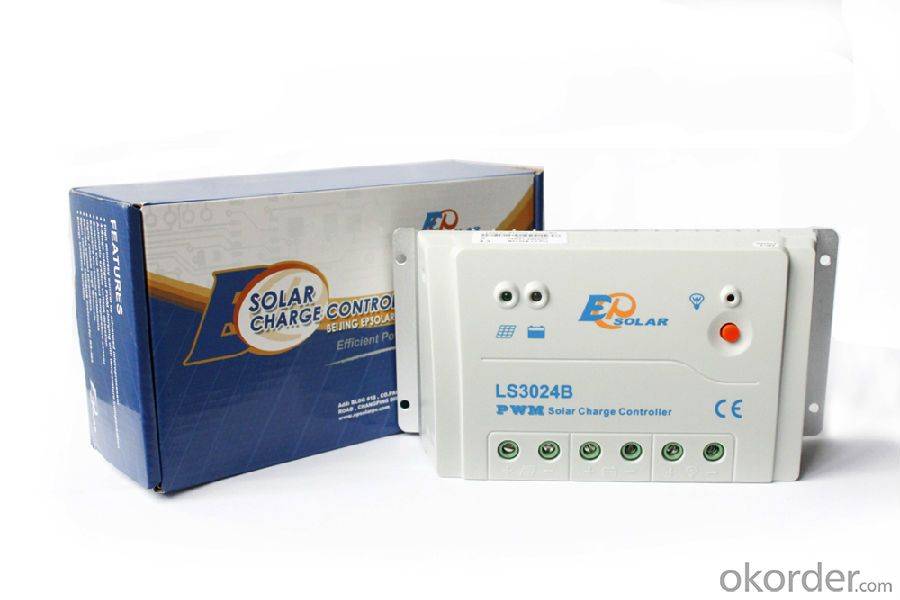
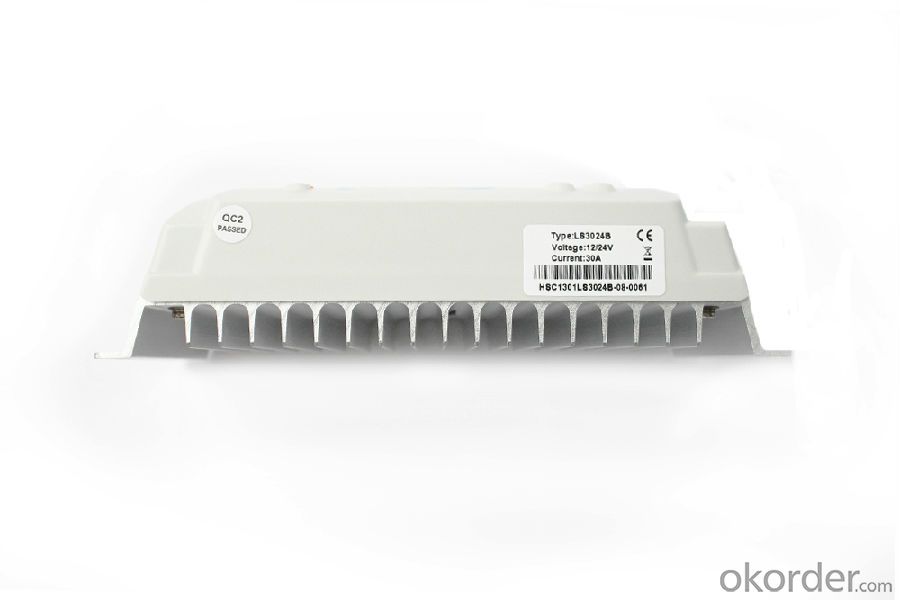
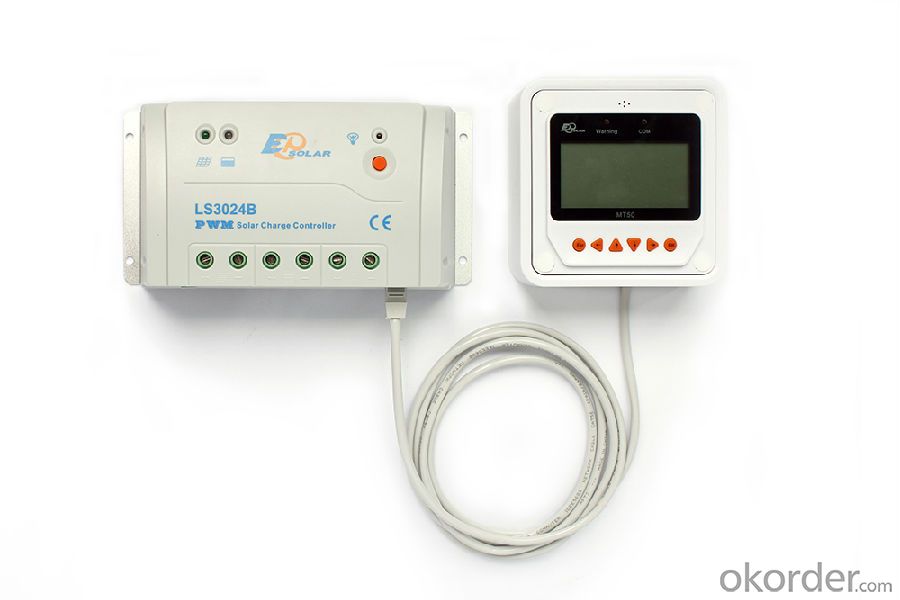
FAQ:
Q1. What is the voltage?
A1. Our 45/60A solar charge controller is 12/24/36/48V auto work.
Q2. What is the difference between MPPT&PWM?
A2. MPPT has higher efficiency, it can track the max power point and won't waste energy.
Q3. What is the efficiency of the MPPT controller?
A3. MPPT>99%, peak conversion efficiency>98%.
Q4. What is the waranty of product?
A4. 12 months.
Q5. What protection does your MPPT controller have?
A5. PV array short circuit, PV reverse polarity, Battery reverse polarity, Over charging, Output short circuit.
- Q: What is the maximum number of charging stages supported by a solar controller?
- The maximum number of charging stages supported by a solar controller can vary depending on the specific model and manufacturer. However, it is common for solar controllers to support up to three charging stages, which typically include bulk charging, absorption charging, and float charging.
- Q: Can a solar controller be used with a solar-powered signage system?
- Yes, a solar controller can be used with a solar-powered signage system. A solar controller regulates the voltage and current flow from the solar panels to the signage system, ensuring proper charging and optimal performance of the system.
- Q: How does a solar controller prevent overvoltage in the system?
- A solar controller prevents overvoltage in a system by continuously monitoring the voltage levels of the solar panels. It regulates the charging process by adjusting the current flow to the batteries, ensuring that the voltage remains within a safe range. If the voltage exceeds the set limit, the solar controller will limit the current or cut off the charging process altogether, preventing any potential damage to the system.
- Q: What is the maximum number of load control modes supported by a solar controller?
- The maximum number of load control modes supported by a solar controller can vary depending on the specific model and manufacturer. However, some advanced solar controllers can support multiple load control modes, typically ranging from 2 to 4 modes.
- Q: What is the maximum temperature rating for a solar controller?
- The specific model and manufacturer are factors that can cause the maximum temperature rating for a solar controller to differ. Nevertheless, a majority of well-made solar controllers are engineered to function effectively within a broad spectrum of temperatures, typically spanning from -40°C to 85°C (-40°F to 185°F). This wide temperature range guarantees that the controller remains resilient and durable, even in the face of harsh weather conditions like scorching summers or freezing winters. To ascertain the maximum temperature rating for a particular solar controller model, it is imperative to refer to the manufacturer's specifications or user manual.
- Q: Can a solar controller be used with solar-powered water heaters?
- Yes, a solar controller can be used with solar-powered water heaters. A solar controller helps regulate the operation of the solar heating system by controlling the flow of heat or electricity from the solar panels to the water heater. It ensures optimal performance and efficiency of the solar-powered water heater by monitoring and adjusting various parameters such as temperature, pressure, and flow rate.
- Q: Can a solar controller be used with solar-powered indoor research facilities?
- Yes, a solar controller can be used with solar-powered indoor research facilities. A solar controller is an essential component of a solar power system, regardless of whether it is used in an indoor or outdoor setting. It is responsible for regulating the flow of electricity from the solar panels to the batteries and other appliances. In an indoor research facility, solar panels can be installed on the roof or on any available outdoor space to harness sunlight and convert it into electricity. The solar controller will then manage the charging and discharging process of the batteries, ensuring that the power generated by the solar panels is efficiently stored and used when needed. This allows the indoor research facility to operate on renewable energy, reducing its reliance on traditional power sources and minimizing its carbon footprint.
- Q: Can a solar controller be used with both lead-acid and AGM batteries?
- Yes, a solar controller can generally be used with both lead-acid and AGM batteries. However, it is important to ensure that the solar controller is compatible with the specific type of battery being used. Different battery chemistries have different charging requirements, so it is crucial to select a solar controller that supports both lead-acid and AGM batteries or has adjustable charging settings to accommodate both types.
- Q: What is the typical standby power consumption of a solar controller?
- The standby power consumption of a solar controller can vary depending on the specific model and brand, but most modern controllers have a very low standby power consumption. On average, these controllers consume as little as 0.1 watts to about 1 watt when not actively controlling the solar system. Efficient design and advanced power-saving technologies enable these controllers to achieve such low standby power consumption. They are designed to minimize energy waste and only use a minimal amount of power when not actively controlling the solar system. It is important to consider that standby power consumption may also be influenced by factors like the size of the solar system, the complexity of the controller's features, and any additional accessories connected to the controller. Thus, it is always advisable to consult the manufacturer's product specifications for accurate information on the standby power consumption of a specific solar controller.
- Q: Is it necessary to have a solar controller for every solar panel?
- No, it is not necessary to have a solar controller for every solar panel. A solar controller, also known as a charge controller, is typically used to regulate the flow of electricity from the solar panels to the batteries or grid. In some cases, a single solar controller can be used to manage the output of multiple solar panels, especially if they are connected in series or parallel configurations. The number of solar controllers required depends on the specific system design and requirements.
Send your message to us
Aerl Solar Controllers PWM Solar Charge Controller 30A 12/24V LS3024B
- Loading Port:
- Tianjin
- Payment Terms:
- TT or LC
- Min Order Qty:
- -
- Supply Capability:
- 10000 pc/month
OKorder Service Pledge
OKorder Financial Service
Similar products
Hot products
Hot Searches
Related keywords
